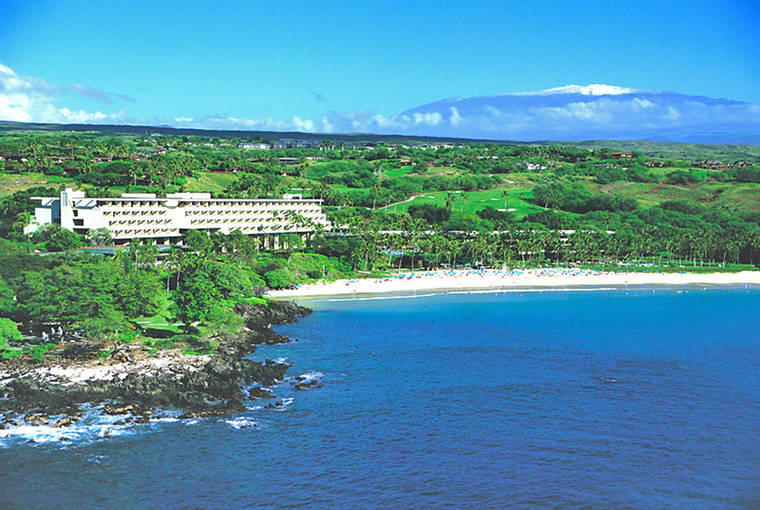Hawaii Island is joining Maui and Kauai in exploring a new concept in gradually reopening their doors to tourists — a “resort bubble” where quarantining visitors would be allowed freedom to roam within the confines of a “geofence.”
“(It’s) another idea we’ve been tossing out there,” Hawaii County Managing Director Roy Takemoto told the County Council Tuesday. “They would be allowed to stay at selected resorts and the resorts would control where the visitors would be allowed to range.”
County officials and tourism authorities currently have more questions than answers. The system would depend on voluntary compliance by resort guests to be monitored. There are also questions surrounding how much space a resort could devote to the quarantiners and how amenities such as restaurants, shops and swimming pools would be handled.
But the concept could be promising as a way to slowly bring visitors back and put hospitality workers back to work. Most hotels and resorts have had little traffic since the March shutdown of the state and the requirement that trans-Pacific visitors quarantine in their hotel or motel rooms for 14 days before being allowed out.
The state is working on an alternative method of allowing visitors to bypass the quarantine provided they take a coronavirus screening test 72 hours before traveling. That system wasn’t ready in time for an Aug. 1 reopening, but the state hopes it will be ready by Sept. 1.
Takemoto said all of the Big Island COVID-19 cases except a cluster at Kona Community Hospital have been travel-related. That’s one of the reasons Mayor Harry Kim has been urging the state to take a cautious approach to reopening.
Puna Councilman Matt Kanealii-Kleinfelder agrees with the cautious approach.
“I don’t agree with the administration frequently, but in this case I agree,” he said. “Hot spots are unable to test their citizens and get results in three days. … That worries me. (Tourists) would be jumping into a plane full of people and not get their test results until into they’re three days into their vacation.”
Hilo Councilwoman Sue Lee Loy also needed more assurance.
“In the past when we were trying to address COVID, there were different messages from the state,” she said. “If we had a consistent way of tracking people coming to the Big Island, I think it will go a long way toward slowing the curve or smashing the curve.”
Stephanie Donoho, administrative director of the Kohala Coast Resort Association, said Tuesday the member resorts were just learning about the concept and weren’t ready to comment before evaluating it.
Craig Anderson, chairman of the Hawaii Island chapter of the Hawaii Lodging and Tourism Association and vice president of operations at Mauna Kea Resort, participated Tuesday in a Zoom conference briefing tourism officials about the program.
“It’s very early and it’s complicated. … All of us in the visitor industry support having a safe environment for our employees as well as our visitors,” Anderson said. “We’re trying to be a lubricant to help surface solutions and help move things forward. … It’s another example of us all working with the uncertainly of this bizarre pandemic and how we create a new future for all of us.”






